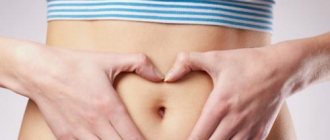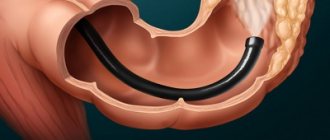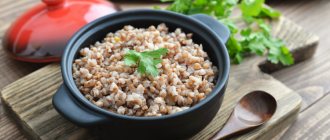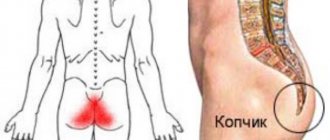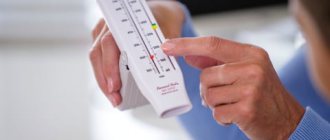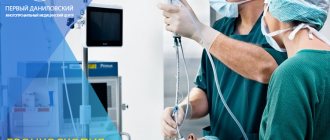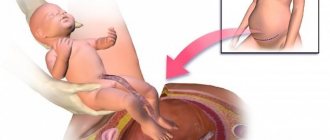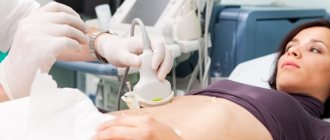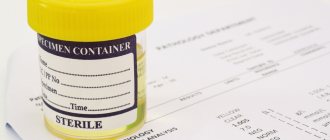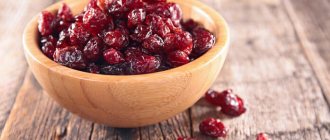Fibrogastroscopy is an informative examination method that helps to identify many pathologies of the digestive system in the initial stages. This allows the doctor to make an accurate diagnosis and develop a treatment strategy. Therefore, it is so important to carefully prepare for the procedure so as not to miss areas of pathology.
Gastroscopy is a responsible procedure for which you need to prepare. It is especially important to follow all the rules on the eve of the examination. The informativeness and usefulness of the diagnosis depends on how physically and psychologically prepared a person is. In the article you will find complete information on how to prepare for the procedure.
Is it possible to eat before gastroscopy?
The diet in anticipation of any endoscopy changes as it approaches the day of diagnosis.
The list of permitted and prohibited products is different on the first preparatory day and 1 day before endoscopy. You need to understand that endoscopy is done exclusively on an empty stomach, since eating even a small amount of food in the morning triggers an active and aggressive process of gastric juice production. This leads to changes in the appearance of the mucous membrane, which makes it difficult to obtain reliable information. 3 days before the study, you must give up alcoholic beverages, fatty, spicy and fried foods, smoked foods and pickles.
That is, you need to avoid foods that promote gas formation and changes in stomach acidity. 2 days before endoscopy, you need to adhere to a more limited diet, excluding the consumption of fatty fish and meats, fast food (in any form), mushrooms, sauces, smoked meats, canned food, nuts and even seeds. The day before the examination, you must refrain from whole grains, beans, milk, cottage cheese (a small handful of exclusively low-fat cottage cheese is allowed), flour, pasta, tomatoes, fruits and dishes that promote prolonged digestion and fermentation. It is forbidden to have breakfast directly on the day of this medical procedure.
Basic Rules
An adult needs to prepare for the procedure in advance (several days in advance). That is why the patient must be informed in advance about certain rules. Since this is an invasive technique that involves, albeit small, but still health risks, it is recommended to carry out the following studies and laboratory tests before performing it:
- electrocardiogram;
- clinical blood test;
- coagulogram;
- determination of blood group and Rh factor;
- blood tests for HIV, syphilis, hepatitis.
Scheme of gastroscopy
Preparation for gastroscopy of the stomach necessarily involves following a strict diet and short fasting immediately before the study. The doctor will tell you how many hours the patient should not eat. As a rule, the last meal is allowed 12 hours before the procedure.
If the procedure is performed under local anesthesia, then before it begins, a local anesthetic (Lidocaine) is injected into the patient's throat. If the patient is aware that he has an increased sensitivity to such drugs, then he must notify the doctor about this.
This study is done quickly - no more than 10 minutes. If there are circumstances where an examination is needed over a long period of time, a drug for general anesthesia is administered intravenously to the person. Before gastroscopy, you should also remove contact lenses (or glasses), dentures, and empty your bladder.
No ads 1
How long before EGD should you not eat?
The gastroscopy enters the stomach through the pharynx and esophagus, so the upper gastrointestinal tract must be cleared of incoming food. This means that at least 8 hours before the diagnosis you will need to refuse any food. If the procedure is performed in the morning, then dinner should take place no later than 18 hours. At the same time, it should consist of light and easily digestible foods. If the manipulation is scheduled for the afternoon, then only a small snack in the morning is allowed. It is preferable to choose a puree dish with a soft consistency and room temperature.
The best option for such a breakfast would be oatmeal without additives. According to medical recommendations, at least 8-10 hours should pass after the last meal and before the start of the diagnostic procedure.
What is needed before the procedure
Fibrogastroscopy is prescribed to identify various pathologies of the digestive tract, including neoplasms, ulcers, and inflammation. The reason may be the patient's complaints of pain in the hypochondrium, epigastric region, heartburn, heaviness in the stomach. Other objective signs may also indicate stomach diseases, for example, anemia, pale and flaky skin, and bad breath.
Consultative appointment
Before the procedure, be sure to consult with a gastroenterologist. He will find out and clarify your complaints, prescribe or cancel medications that you take regularly. Before the procedure, a psychological state is extremely important, so the doctor may prescribe sedatives and additional medications to lower blood pressure if he notices signs of an unstable psyche or panic attacks.
The doctor will identify conditions that influence the choice of anesthetic drugs during FGDS. He will ask about hypersensitivity to medications used in gastroscopy, cholelithiasis (magnesium sulfate is contraindicated), the presence of glaucoma (in this case atropine is contraindicated), other pathologies, as well as pregnancy and lactation.
Is it possible to drink?
Before gastroscopy, you need to give up tea, coffee, cocoa and any other drinks. You will also need to give up milk, kefir, juices (both fruit and vegetable, including fresh juices), jelly, compotes, decoctions and fruit drinks. If the subject has an urgent need to drink something, he should give preference to exclusively clean water (not carbonated or mineral). However, its use should be no later than 3 hours before the examination. In some cases, you are allowed to drink half a glass of warm water 30-40 minutes before the test. As mentioned above, the consumption of alcoholic beverages (in any quantity and any strength) is prohibited 3 days before the study.
The liquid should only be at room temperature. It is also prohibited to use sweeteners (especially sugar). But in case of urgent need, you can add a small amount of honey.
Additional recommendations
Additional recommendations include tips that help ensure the most comfortable conditions for conducting the study:
- Do not use perfumes or deodorants with strong odors on this day. During the procedure, the gag reflex is exacerbated, so the smell can provoke a worsening of the situation or cause unnecessary discomfort. By the way, medical specialists may also experience discomfort due to the smell, or even allergic reactions.
- Comfortable clothes. It should be free and not be removed over the head.
- Brushing your teeth before the procedure is allowed, but drinking water is not allowed - it’s better to just rinse your mouth.
For FGD diagnostics, there are not only medical indications, but also contraindications that require mandatory correction:
- ARVI, sinusitis, tonsillitis, tonsillitis and other colds, accompanied by a number of unpleasant symptoms that may affect the quality of the study. It is first necessary to treat existing diseases and eliminate all symptoms that can lead to complications after diagnosis.
- The patient has a history of strokes and heart attacks in the last 6 months. It is necessary to wait for the body to recover after such serious illnesses. The patient is also prescribed hypertensive or antiarrhythmic drugs if there are relative contraindications to the FGDS procedure.
- Pregnancy. FGDS study in this case is carried out after successful delivery.
In fact, FGDS is a diagnosis that is not such a terrible manipulation that you should be so afraid of. It is important to understand that the results of the study will allow you to make the correct diagnosis and prescribe effective treatment. Preparation is easier with the support of loved ones and relatives. You can take advantage of advice on special thematic forums, where people who have undergone this procedure talk about their experiences. You can do an FGDS of the stomach quickly and without discomfort with us, for details follow the link.
Rules for preparing for a study with a biopsy
Adult patients can undergo advanced diagnostics - perform a gastric biopsy using gastroscopy. During the procedure, tissue samples are taken with special forceps at the border of the changed and healthy areas of the mucosa. The number of samples required for histological examination is from 3 to 5.
The biological material is sent to the laboratory for histological examination. The procedure is simple and rarely accompanied by complications. A biopsy is indicated in several cases. Here is their list:
- ulcerative defects of the mucous membrane;
- acute and chronic gastroduodenitis;
- neoplasms;
- assessment of the condition of the gastric epithelium after surgical interventions.
In addition to identifying pathological formations, a biopsy helps to identify Helicobacter pylori. Various studies of the obtained tissue sections are carried out.
Testing for Helicobacter pylori also includes other methods:
- microscopy;
- immunohistochemistry;
- PCR to clarify the presence of pathogen DNA;
- cultural method;
- pH-metry;
- urease test.
Several hours before FGDS, the strictest restrictions apply
Additionally, swabs are taken from the surface of the stomach and the degree of contamination of the mucous membrane is determined.
Fully or partially limited products
Diet before gastroscopy includes exclusion from the diet:
- First courses in strong broth (meat, fish, mushroom).
- Fatty meat, sausages, smoked meats, goose, duck, fast food, animal/cooking fats, canned food, semi-finished products.
- Hot/spicy spices, mushrooms, pickles and marinades, fatty sauces based on mayonnaise,
- Raw vegetables/fruits, legumes (peas, soybeans, beans, lentils).
- Black/whole grain bread, pastries, dough, pancakes, dumplings, dumplings.
- Fatty dairy products (cream, sour cream, cottage cheese).
- Dried fruits, nuts, seeds, juices with pulp, sweets (sweets, jam, chocolate, ice cream).
- Carbonated/alcoholic drinks, strong tea, coffee, cocoa.
Table of prohibited products
| Proteins, g | Fats, g | Carbohydrates, g | Calories, kcal | |
Vegetables and greens | ||||
| vegetables legumes | 9,1 | 1,6 | 27,0 | 168 |
| canned vegetables | 1,5 | 0,2 | 5,5 | 30 |
| sauerkraut | 1,8 | 0,1 | 4,4 | 19 |
| bulb onions | 1,4 | 0,0 | 10,4 | 41 |
| white radish | 1,4 | 0,0 | 4,1 | 21 |
| celery (root) | 1,3 | 0,3 | 6,5 | 32 |
| horseradish | 3,2 | 0,4 | 10,5 | 56 |
| garlic | 6,5 | 0,5 | 29,9 | 143 |
| spinach | 2,9 | 0,3 | 2,0 | 22 |
| sorrel | 1,5 | 0,3 | 2,9 | 19 |
Mushrooms | ||||
| mushrooms | 3,5 | 2,0 | 2,5 | 30 |
Nuts and dried fruits | ||||
| nuts | 15,0 | 40,0 | 20,0 | 500 |
| dried fruits | 2,3 | 0,6 | 68,2 | 286 |
Flour and pasta | ||||
| vareniki | 7,6 | 2,3 | 18,7 | 155 |
| dumplings | 11,9 | 12,4 | 29,0 | 275 |
Confectionery | ||||
| cookie | 7,5 | 11,8 | 74,9 | 417 |
Cakes | ||||
| cake | 4,4 | 23,4 | 45,2 | 407 |
Chocolate | ||||
| chocolate | 5,4 | 35,3 | 56,5 | 544 |
Raw materials and seasonings | ||||
| seasonings | 7,0 | 1,9 | 26,0 | 149 |
| mustard | 5,7 | 6,4 | 22,0 | 162 |
| ginger | 1,8 | 0,8 | 15,8 | 80 |
| ketchup | 1,8 | 1,0 | 22,2 | 93 |
| mayonnaise | 2,4 | 67,0 | 3,9 | 627 |
| ground black pepper | 10,4 | 3,3 | 38,7 | 251 |
| chilli | 2,0 | 0,2 | 9,5 | 40 |
Dairy | ||||
| dairy products | 3,2 | 6,5 | 4,1 | 117 |
| cream 35% (fat) | 2,5 | 35,0 | 3,0 | 337 |
Cheeses and cottage cheese | ||||
| cheese | 24,1 | 29,5 | 0,3 | 363 |
Meat products | ||||
| pork | 16,0 | 21,6 | 0,0 | 259 |
| salo | 2,4 | 89,0 | 0,0 | 797 |
| bacon | 23,0 | 45,0 | 0,0 | 500 |
| ham | 22,6 | 20,9 | 0,0 | 279 |
Sausages | ||||
| dry-cured sausage | 24,1 | 38,3 | 1,0 | 455 |
| sausages | 10,1 | 31,6 | 1,9 | 332 |
Bird | ||||
| fried chicken | 26,0 | 12,0 | 0,0 | 210 |
| smoked chicken | 27,5 | 8,2 | 0,0 | 184 |
| duck | 16,5 | 61,2 | 0,0 | 346 |
| goose | 16,1 | 33,3 | 0,0 | 364 |
Fish and seafood | ||||
| smoked fish | 26,8 | 9,9 | 0,0 | 196 |
| canned fish | 17,5 | 2,0 | 0,0 | 88 |
Oils and fats | ||||
| cooking fat | 0,0 | 99,7 | 0,0 | 897 |
Alcoholic drinks | ||||
| dry white wine | 0,1 | 0,0 | 0,6 | 66 |
| dry red wine | 0,2 | 0,0 | 0,3 | 68 |
| vodka | 0,0 | 0,0 | 0,1 | 235 |
| cognac | 0,0 | 0,0 | 0,1 | 239 |
| beer | 0,3 | 0,0 | 4,6 | 42 |
Non-alcoholic drinks | ||||
| bread kvass | 0,2 | 0,0 | 5,2 | 27 |
Juices and compotes | ||||
| jelly | 0,2 | 0,0 | 16,7 | 68 |
| * data is per 100 g of product | ||||
Authorized Products
The diet before gastroscopy includes:
- Soups cooked in weak chicken/vegetable/fish broth without additional fats, seasonings, oils and fried ingredients.
- Low-fat white fish (pollock, pike perch, perch, hake, blue whiting, pike) boiled/steamed.
- Boiled chicken meat without skin, rabbit meat, turkey.
- Porridge (buckwheat, rice, wheat) cooked in water.
- Soft-boiled chicken eggs/steamed omelettes.
- Wheat bread, white bread crackers, Cracker cookies.
- Low-fat dairy products (non-acidic kefir, cottage cheese, yogurt, mild unsalted cheese), butter.
- Vegetables/fruits, steamed or boiled/baked (carrots, beets, potatoes, cauliflower, non-sour grated pears, apples, pumpkin, bananas).
- Drinks include compotes of fresh fruits/dried fruits, decoctions, weak teas with milk and moderate sugar content, still table mineral waters, fruit drinks, rosehip decoction.
Table of permitted products
| Proteins, g | Fats, g | Carbohydrates, g | Calories, kcal | |
Vegetables and greens | ||||
| zucchini | 0,6 | 0,3 | 4,6 | 24 |
| cauliflower | 2,5 | 0,3 | 5,4 | 30 |
| potato | 2,0 | 0,4 | 18,1 | 80 |
| carrot | 1,3 | 0,1 | 6,9 | 32 |
| boiled carrots | 0,8 | 0,3 | 5,0 | 25 |
| pumpkin | 1,3 | 0,3 | 7,7 | 28 |
Fruits | ||||
| apricots | 0,9 | 0,1 | 10,8 | 41 |
| watermelon | 0,6 | 0,1 | 5,8 | 25 |
| bananas | 1,5 | 0,2 | 21,8 | 95 |
| melon | 0,6 | 0,3 | 7,4 | 33 |
| peaches | 0,9 | 0,1 | 11,3 | 46 |
| apples | 0,4 | 0,4 | 9,8 | 47 |
Cereals and porridges | ||||
| buckwheat | 4,5 | 2,3 | 25,0 | 132 |
| semolina | 3,0 | 3,2 | 15,3 | 98 |
| oatmeal with water | 3,0 | 1,7 | 15,0 | 88 |
| cereals | 11,9 | 7,2 | 69,3 | 366 |
| pearl barley porridge on water | 3,1 | 0,4 | 22,2 | 109 |
| white boiled rice | 2,2 | 0,5 | 24,9 | 116 |
Flour and pasta | ||||
| noodles | 12,0 | 3,7 | 60,1 | 322 |
Bakery products | ||||
| sliced loaf | 7,5 | 2,9 | 50,9 | 264 |
| white bread crackers | 11,2 | 1,4 | 72,2 | 331 |
| wheat bread | 8,1 | 1,0 | 48,8 | 242 |
Confectionery | ||||
| jam | 0,3 | 0,2 | 63,0 | 263 |
| marshmallows | 0,8 | 0,0 | 78,5 | 304 |
| paste | 0,5 | 0,0 | 80,8 | 310 |
Raw materials and seasonings | ||||
| honey | 0,8 | 0,0 | 81,5 | 329 |
| milk sauce | 2,0 | 7,1 | 5,2 | 84 |
Dairy | ||||
| kefir | 3,4 | 2,0 | 4,7 | 51 |
| sour cream | 2,8 | 20,0 | 3,2 | 206 |
| curdled milk | 2,9 | 2,5 | 4,1 | 53 |
Cheeses and cottage cheese | ||||
| cottage cheese | 17,2 | 5,0 | 1,8 | 121 |
Meat products | ||||
| rabbit | 21,0 | 8,0 | 0,0 | 156 |
Bird | ||||
| boiled chicken breast | 29,8 | 1,8 | 0,5 | 137 |
| boiled chicken drumstick | 27,0 | 5,6 | 0,0 | 158 |
| boiled turkey fillet | 25,0 | 1,0 | — | 130 |
Eggs | ||||
| chicken eggs | 12,7 | 10,9 | 0,7 | 157 |
Oils and fats | ||||
| butter | 0,5 | 82,5 | 0,8 | 748 |
| ghee | 0,2 | 99,0 | 0,0 | 892 |
Non-alcoholic drinks | ||||
| mineral water | 0,0 | 0,0 | 0,0 | — |
Juices and compotes | ||||
| compote | 0,5 | 0,0 | 19,5 | 81 |
| apricot juice | 0,9 | 0,1 | 9,0 | 38 |
| pumpkin juice | 0,0 | 0,0 | 9,0 | 38 |
| * data is per 100 g of product | ||||
Advantages and disadvantages
| pros | Minuses |
|
|
